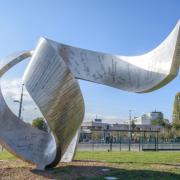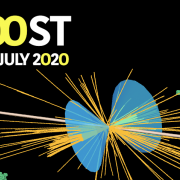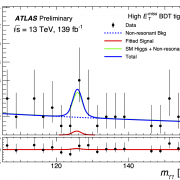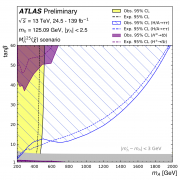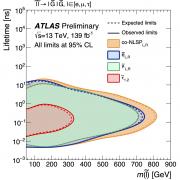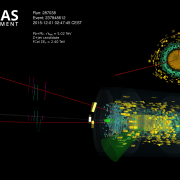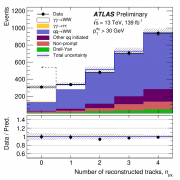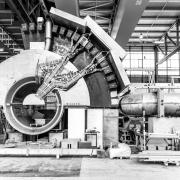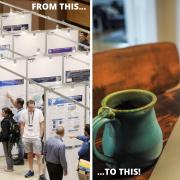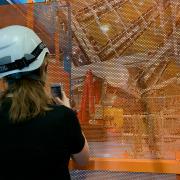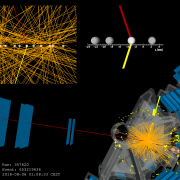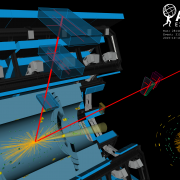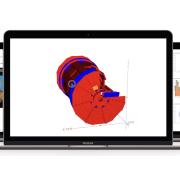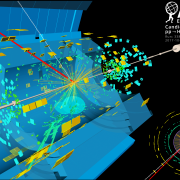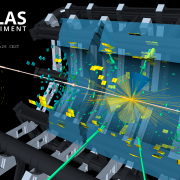Access to Collaboration Site and Physics Results
Updates tagged: “Higgs group”
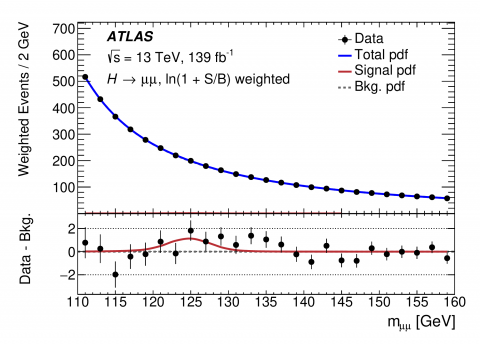
ATLAS one step closer in the search for rare Higgs boson decays to muons
The ATLAS Collaboration has released a new paper on the search for the Higgs-boson decay to a pair of muons. The new study uses the entire dataset collected by the ATLAS experiment during Run 2 of the LHC (2015–2018) to give a first hint of this elusive process.
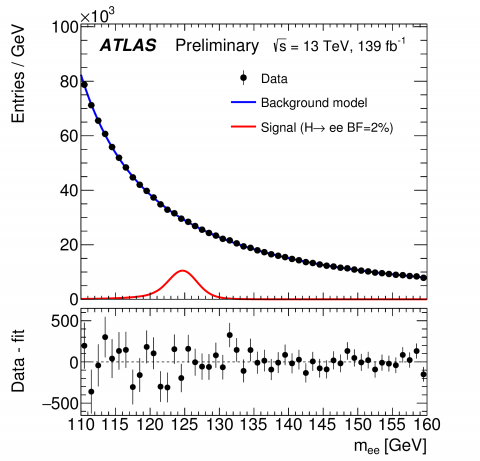
Searching for Higgs boson interactions with the lightest charged lepton
Does the Higgs boson follow all of the rules set by the Standard Model? Since discovering the particle in 2012, the ATLAS and CMS Collaborations have been hard at work studying the behaviour of the Higgs boson. Any unexpected observations could be a sign of new physics beyond the Standard Model.
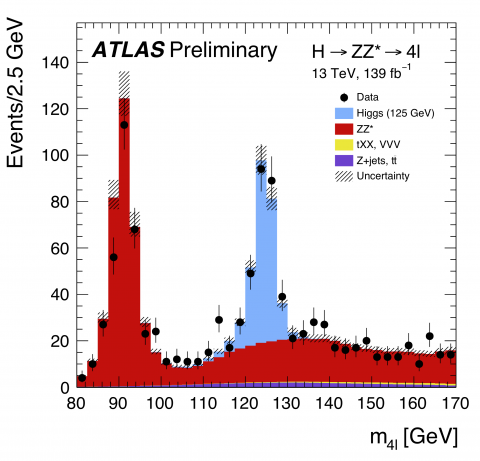
Exploring the Higgs boson “discovery channels"
This week, at the European Physical Society Conference on High-Energy Physics (EPS-HEP) in Ghent, Belgium, the ATLAS Collaboration at CERN released new measurements of Higgs boson properties using the full LHC Run 2 dataset. Critically, the new results examine two of the Higgs boson decays that led to the particle’s discovery in 2012: H→ZZ*→4ℓ, where the Higgs boson decays into two Z bosons, in turn decaying into four leptons (electrons or muons); and H → γγ, where the Higgs boson decays directly into two photons.
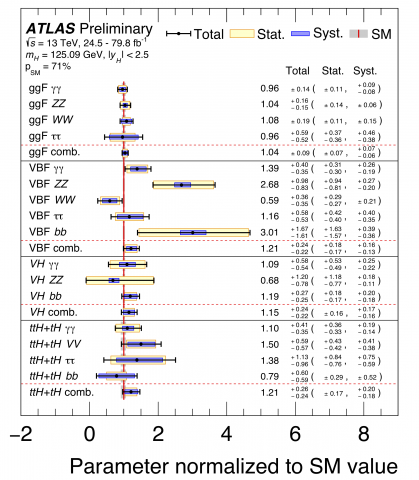
All together now: adding more pieces to the Higgs boson puzzle
The Higgs boson was discovered in 2012 by the ATLAS and CMS experiments, but its rich interaction properties (its coupling to other particles) have remained a puzzle. Thanks to an unprecedented amount of Higgs bosons produced at the LHC, all of the main Higgs boson production and decay modes have now been observed.

ATLAS measures Higgs boson coupling to top quark in diphoton channel with full Run 2 dataset
At the Rencontres de Moriond (La Thuile, Italy), the ATLAS Collaboration presented an updated measurement of ttH production in the diphoton channel. The result examines the full Run 2 dataset – 139 fb-1 collected between 2015 and 2018 – to observe ttH production in a single channel with a significance of 4.9 standard deviations.

ATLAS searches for double Higgs production
The Brout-Englert-Higgs (BEH) mechanism is at the core of the Standard Model, the theory that describes the fundamental constituents of matter and their interactions. It introduces a new field, the Higgs field, through which the weak bosons (W and Z) become massive while the photon remains massless. The excitation of this field is a physical particle, the Higgs boson, which was discovered by the ATLAS and CMS collaborations in 2012.
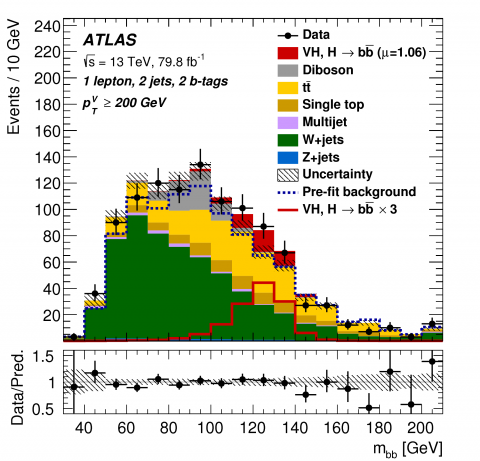
Higgs boson observed decaying to b quarks – at last!
Today, at the 2018 International Conference on High Energy Physics in Seoul, the ATLAS experiment reported a preliminary result establishing the observation of the Higgs boson decaying into pairs of b quarks, furthermore at a rate consistent with the Standard Model prediction.
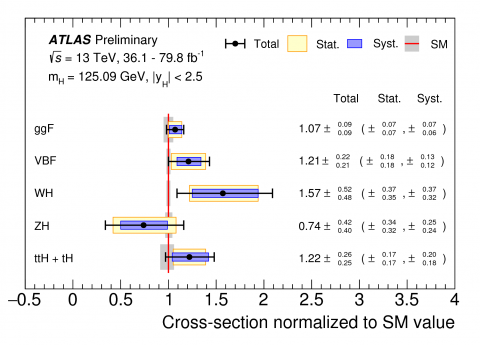
Combined measurements of Higgs boson couplings reach new level of precision
Higgs boson couplings manifest themselves in the rate of production of the Higgs boson at the LHC, and its decay branching ratios into various final states. These rates have been precisely measured by the ATLAS experiment, using up to 80 fb–1 of data collected at a proton-proton collision energy of 13 TeV from 2015 to 2017. Measurements were performed in all of the main decay channels of the Higgs boson: to pairs of photons, W and Z bosons, bottom quarks, taus, and muons. The overall production rate of the Higgs boson was measured to be in agreement with Standard Model predictions, with an uncertainty of 8%. The uncertainty is reduced from 11% in the previous combined measurements released last year.
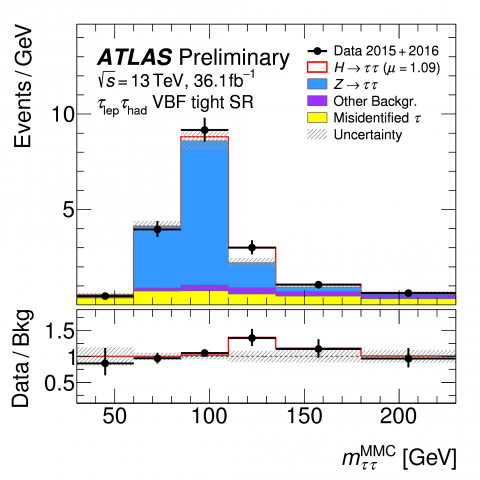
Beyond any doubt: Higgs boson couples to the heaviest lepton
A decisive property of the Higgs boson is its affinity to mass. The heavier a particle is, the stronger the Higgs boson will couple to it. While physicists have firmly established this property for heavy W and Z bosons (force carriers), more data are needed to measure the Higgs boson coupling to the heavy fermions (matter particles). These interactions, known as Yukawa couplings, are very interesting as they proceed through a quite different mechanism than the coupling to force-carrying bosons in the Standard Model.
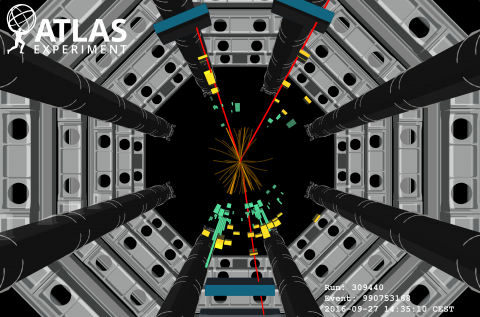
Beyond discovery: ATLAS explores the Higgs boson
The ATLAS Collaboration at CERN has released new studies of the Higgs boson using 13 TeV data collected in 2015 and 2016. The results further corroborate the Standard Model nature of the Higgs boson, and open doors to fresh searches for new physics.


